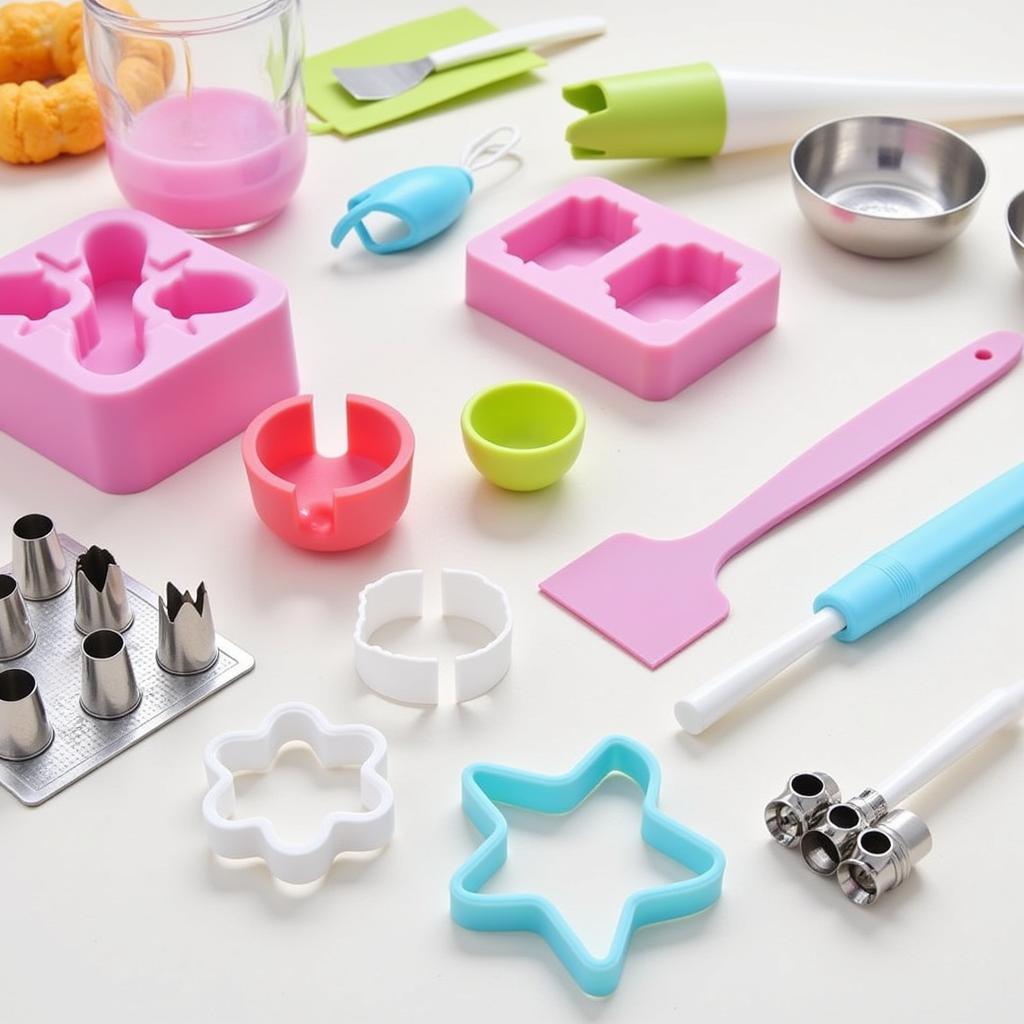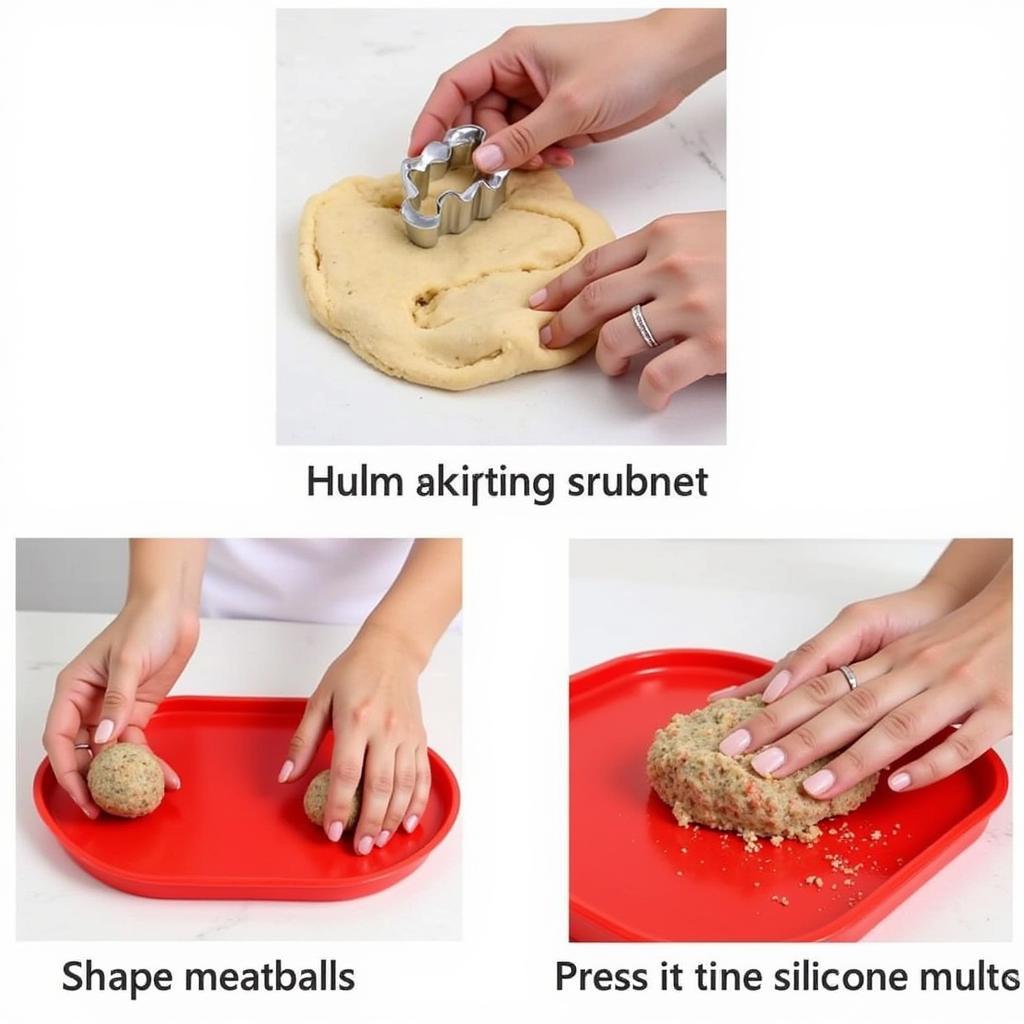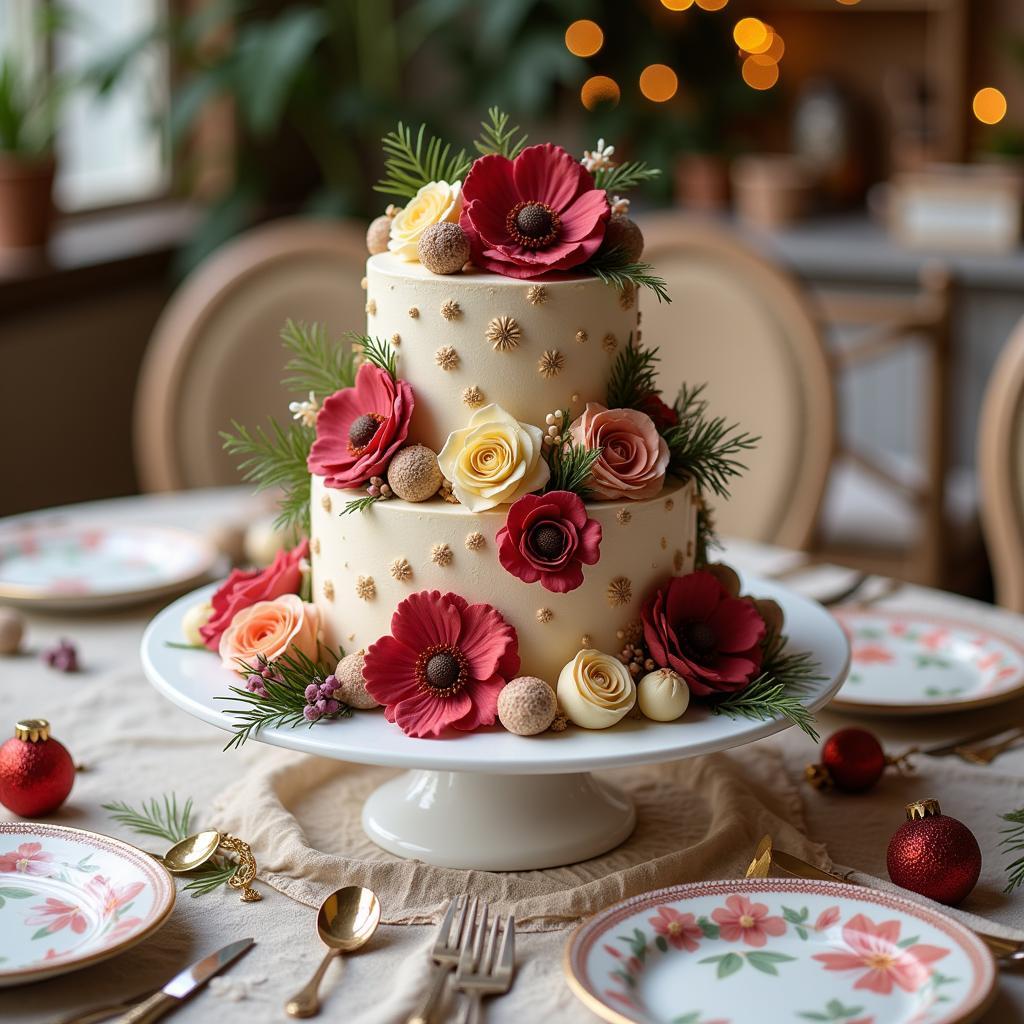Food Moulding is a culinary art form that transforms ordinary ingredients into visually stunning and appealing creations. Whether you’re a professional chef or a home cook looking to elevate your dishes, understanding the techniques and principles of food moulding can open up a world of creative possibilities in the kitchen. From intricate chocolate sculptures to elegant vegetable carvings, food moulding allows you to add a touch of artistry and sophistication to any meal.
Exploring the Art of Food Moulding
Food moulding encompasses a variety of techniques, each offering unique ways to shape and sculpt food. It’s not just about aesthetics; moulding can also enhance the dining experience by creating interesting textures and portion control. Think about perfectly shaped dumplings, intricate pastries, or even simple, uniform meatballs. These are all examples of food moulding in action. While some techniques require specialized tools and moulds, others can be achieved with readily available kitchen equipment.
Essential Tools and Materials for Food Moulding
Having the right tools and materials is crucial for successful food moulding. From basic cookie cutters to professional-grade silicone moulds, the tools you choose will depend on the complexity of your project. Here are a few essentials to get you started:
- Moulds: Silicone, plastic, and metal moulds come in a wide range of shapes and sizes, offering endless possibilities for creating intricate designs.
- Cutters: Cookie cutters, vegetable cutters, and even simple knives can be used to create basic shapes and patterns.
- Spatulas and Spreaders: These are essential for smoothing surfaces and filling moulds evenly.
- Piping Bags and Tips: These tools are perfect for creating intricate decorations and adding details to your moulded creations.
 Essential Tools for Food Moulding
Essential Tools for Food Moulding
Food Moulding Techniques for Beginners
Even if you’re a novice in the kitchen, you can still achieve impressive results with basic food moulding techniques. Here are a few easy methods to try:
- Using Cookie Cutters: This is a simple and effective way to create fun shapes with dough, cheese, fruits, and vegetables.
- Hand Shaping: This technique involves using your hands to mould food into desired shapes, such as meatballs, dumplings, or patties.
- Pressing into Moulds: This is a straightforward method for creating detailed shapes using pre-made moulds. Simply press your chosen ingredient into the mould and allow it to set.
 Basic Food Moulding Techniques
Basic Food Moulding Techniques
Advanced Food Moulding Techniques
As you become more comfortable with food moulding, you can explore more advanced techniques, such as:
- Chocolate Moulding: This involves tempering chocolate and using specialized moulds to create intricate designs.
- Sugarcraft and Gum Paste Moulding: These techniques are often used in cake decorating to create intricate flowers, figurines, and other decorative elements.
- Vegetable and Fruit Carving: This intricate art form involves using specialized tools to carve fruits and vegetables into elaborate designs.
“Precision and patience are key when mastering advanced food moulding techniques,” says renowned pastry chef, Juliette Dubois. “But the results are truly rewarding, allowing you to transform ordinary ingredients into edible works of art.”
Food Moulding for Different Occasions
Food moulding can be adapted to a wide range of occasions, from everyday meals to special celebrations. Whether you’re preparing a simple weeknight dinner or an elaborate holiday feast, incorporating moulded elements can elevate your dishes and impress your guests.
Everyday Food Moulding Ideas
- Shaped Sandwiches: Use cookie cutters to create fun sandwich shapes for kids’ lunches.
- Moulded Rice Dishes: Create visually appealing rice bowls by packing cooked rice into moulds.
- Decorated Desserts: Add simple moulded decorations to cakes and cookies.
Food Moulding for Special Occasions
- Themed Cakes: Create stunning cakes for birthdays, weddings, and other celebrations using advanced moulding techniques.
- Sculpted Centrepieces: Impress your guests with elaborate fruit and vegetable carvings.
- Elegant Desserts: Create sophisticated desserts using chocolate moulding and sugarcraft techniques.
 Food Moulding for Special Occasions
Food Moulding for Special Occasions
Conclusion
Food moulding is a versatile and rewarding culinary skill that allows you to express your creativity and enhance your dishes. From simple shaping techniques to complex sculpting methods, there’s a food moulding technique for every skill level and occasion. So, why not experiment with food moulding and discover the endless possibilities it offers? Let your imagination run wild and transform your meals into edible masterpieces. If you need help with food moulding or any culinary project, feel free to contact us. Phone: 02437655121, Email: minacones@gmail.com or visit us at 3PGH+8R9, ĐT70A, thôn Trung, Bắc Từ Liêm, Hà Nội, Việt Nam. We have a 24/7 customer service team.
FAQ
- What is food moulding?
- What are the basic food moulding techniques?
- What tools are needed for food moulding?
- Where can I find food moulds?
- What types of food can be moulded?
- Can I use food moulding for everyday meals?
- How can I learn more about advanced food moulding techniques?
Common Food Moulding Questions
- How do I prevent food from sticking to the mould?
- What is the best type of chocolate to use for moulding?
- How do I clean silicone moulds?
Further Exploration
For more information on food moulding and related topics, check out our other blog posts on cake decorating, chocolate making, and culinary arts.
Call us at 02437655121, email minacones@gmail.com, or visit us at 3PGH+8R9, ĐT70A, thôn Trung, Bắc Từ Liêm, Hà Nội, Việt Nam for 24/7 support.